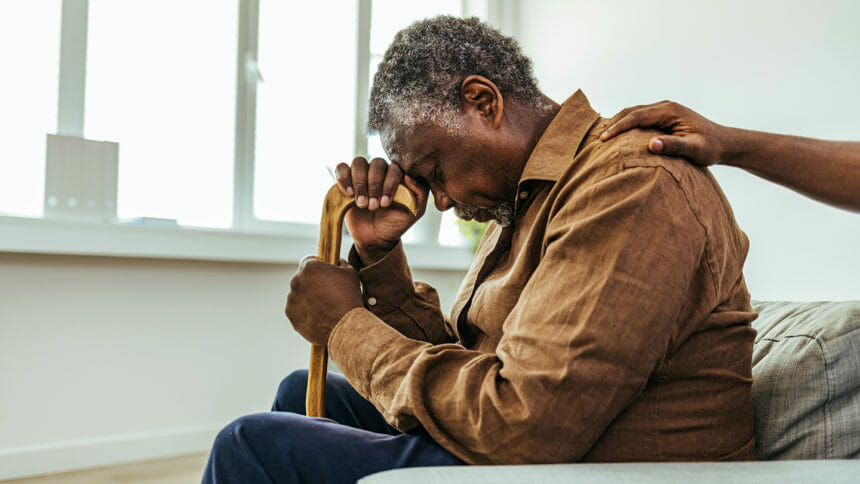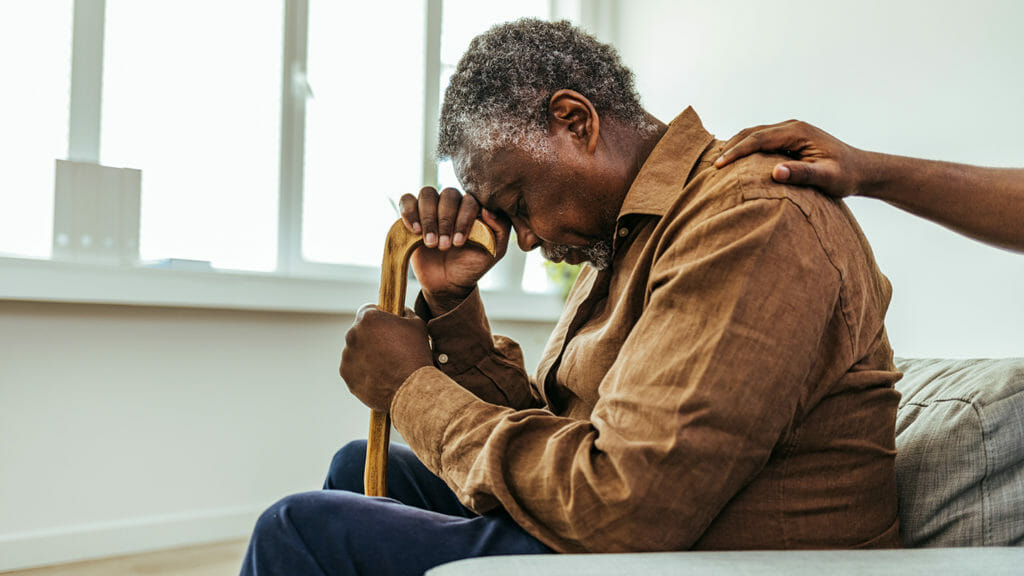

A rare series of structured conversations on bereavement and grief in nursing homes is revealing key insights into the emotional, physical and psychological trauma of repeated loss experienced by residents and staff.
Half way through a pandemic-era study, researchers at the nonprofit Altarum have found the long-term effects of social isolation, loneliness and grief from COVID-19 linger among those who live and work in nursing homes. That can cause a “brain fog” that creates extra burdens that make it hard to function normally.
“People were dying from social isolation and loneliness during the pandemic,” said Christy Avery, Altarum’s project lead on the study.
While protocols varied among states, restrictions on social interactions for nursing home residents were severe. That greatly reduced quality of life and the well-being of residents and staff, Altarum’s website notes in the project description on its website.
The goal of the project is to help facility staff and residents process the trauma of the pandemic and use lessons learned to inform future approaches to bereavement in long-term care settings.
Since May 2022, Avery’s team has led online discussions at nursing homes in Michigan that are open to all staff, residents and their families. The sessions last for one hour every six weeks with topics split into two sections: bereavement and grief, and social isolation and loneliness. The research phase will end in August, when Avery’s team will compile their findings and develop a best practices guide for nursing home operators. The session recordings and other materials will also be made available.
But halfway through the research-gathering phase, Avery said they’re already learning valuable lessons that can help nursing home providers improve working and living environments.
For example, providers can focus on what they allow in terms of memorials and protocols for moving deceased residents from their rooms. That can vary widely among facilities. But focusing on person-centered care that does not hide deaths or sneak bodies out quickly can signal that grieving is acceptable. Some facilities will perform an “honor guard” where the deceased resident is moved through hallways in a manner that allows other residents and staff to say goodbye.
“They’re leaving the building with dignity instead of being squirreled away out the back door,” Avery said, adding that memorials can play a similar role in giving space to grieve, particularly for employees.
“People enter nursing homes and the reality is, they generally die there,” Avery said. “That’s not a new concept. The staff are caring for people they develop feelings for who ultimately die. That takes its toll.”
The number of fatalities in nursing homes, though, was new. The latest data from the Centers for Disease Control indicate that more than 200,000 long-term care residents and staff died because of COVID between March 2020 and June 2021.
Precautions for grieving staff
Grief and bereavement can have serious physical effects such as heart attacks, chronic health conditions, depression and even suicide. Milder effects include a “brain fog” that makes it hard for staff to function fully, which then creates ripples onto other employees. Staff could also skip important steps in their routine, such as not lifting a patient properly, which can cause injury to the resident or staff member.
In an interview with McKnights Long-Term Care News, Avery emphasized the importance of in-person gatherings to provide solace, and she acknowledged the irony of the research, which is being conducted fully online. It would be cost-prohibitive, she said, to pull together in-person focus groups. Online sessions, she added, can erase geographical boundaries.
Facility staff also should be encouraged to talk with each other. They can also form relationships with staff in other parts of the state through the sessions with colleagues they might otherwise not have a chance to meet. So far, more than 200 people from at least 50 nursing homes have participated.
In addition to affecting individuals, grief and loneliness can impact public health in general, Avery noted.
“It’s something we need to acknowledge,” she said. “We’re going to be dealing with this from a societal impact for many years moving forward.”
The sessions on bereavement and grief have covered topics such as how residents and staff can support each other; how staff members can support each other; and planning for end-of-life care. The topics for social isolation and loneliness will address the effects of each on wellbeing; building resident input into socialization and activities, and using tablets to “promote resident communication and joy.”
The next session, the first to address social isolation and loneliness, will take place on Feb. 21. While participation is restricted to nursing homes in Michigan, providers, staff and residents outside the state can access program materials.





